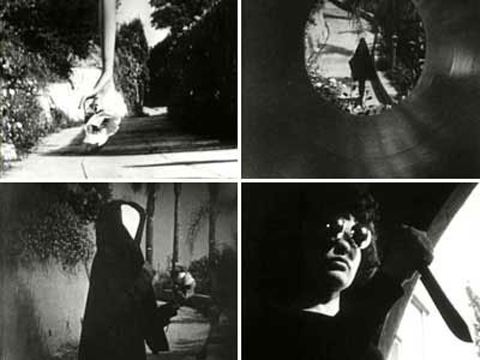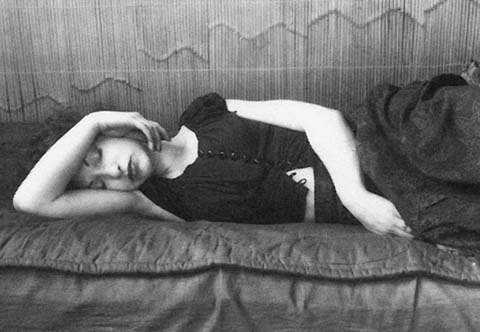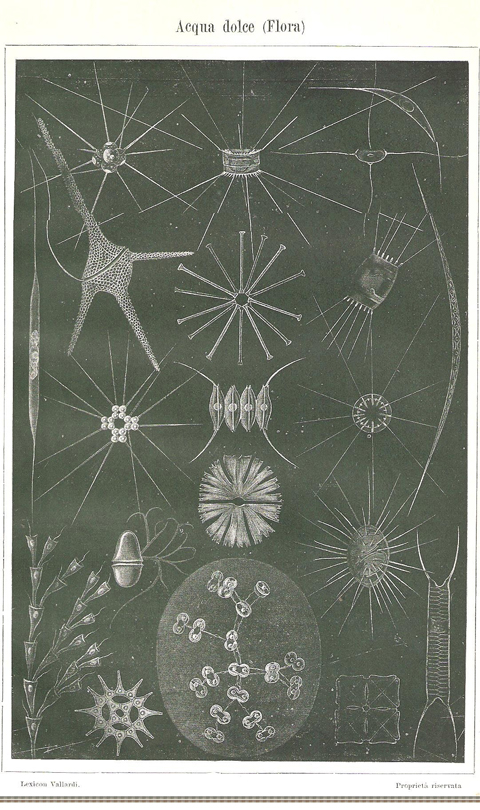On Some Arrangements Theoretical:
Wide Sargasso Sea
15 Feb 2011

Critics have often accused me, and sometimes even my writings, when they distinguish between the two, of being violent, and worse. I make up nothing: I am a reader and take notes on what I read. Whether it's good writing or bad by academic standards doesn't interest me. It never has. What is, simply is as it is. Of course I am interested in learning, in what I don't know, understanding, and if this is the "MAKE IT NEW" that Pound meant, then I subscribe to that tradition." 1989 Kathy Acker
I READ A BOOK EARLIER THIS YEAR, THAT BLEW MY MIND, because it seemed to answer many questions that I had about my own experiences growing up; this in itself was strange because the characters in the book live in world completely apart from my own, in a time and place completely far away from my own, or in which I've never dwelt. And yet, the sensation that the story of this book was close to my own was undeniable. Written in 1966 by Jean Rhys, Wide Sargasso Sea is a novel that stands between modernism and postmodernism, both cultural movements deeply involved with cinematic ideas. Its postmodern sensibilities may explain part of the sensation of familiarity that I felt while reading-that is, living in a time where boundaries in the worlds of art are difficult to discern, and with a tacit agreement that identity, a priori, will be unknown, or at least slightly anonymous. There is almost the sense that a person could swim into someone else's memories, stories, and history without so much as blinking an eye.
The feeling of anonymity produced by such literature, for the reader, then, while it might cause an initial anxiety, could also be a significant resource with which to get inside more completely, a book, and its secrets. Wide Sargasso Sea is written explicitly out of another novel, as a prequel to what had come to be read as a classic, Jane Eyre by Charlotte Bronte. Like much postmodern literature, as well as the modernist literature that came before-Joyce, Eliot, Woolf, and Pount-Rhys' novel emerged from within artistic milieus where cinematic ideas were being generated by many experimental and avant garde artists. Thus, reading Wide Sargasso Sea in conjunction with films could be a way to consider the text that both situates it within a bigger environment---one in which the boundaries between various art forms and theory are fluid and movable---and may give us pathways with which to "read" the text.
Multiplicity: a patchwork vision

Multiplicity is a patchwork vision that flows because no pre-ordained unity of vision of either the seer or what is seen is necessary.[1] Thus it implies a kind of liberation from seeing for someone who perceives the world in this way. It enables the practitioner of perception to dwell and travel within worlds of imagination, and to make connections between those worlds. In this essay, I am drawing a comparison of perception between Meshes of an Afternoon, created in 1943, with Rhys' film to demonstrate the similarities between film narrative, created some twenty years earlier as part of the modern canon, and a work of literature, Wide Sargasso Sea, a work of experimental fiction on the cusp of post-modernity.
Antoinette Cosway, the main character in Wide Sargasso Sea, first as a little girl, and then later as an adult, seems to be someone whose perception in(of) the world works in a similar fashion. Wide Sargasso Sea takes place on the Caribbean islands in the Atlantic Ocean, and the action is focused in Jamaica and Dominica one of the Windward islands. It also takes place partly in England, although Antoinette, at least when she's actually there, doesn't seem to believe that England exists, so it becomes more like a cavern where she can remember her childhood and previous life near the Atlantic Ocean. In the beginning, it is only through mirroring her perception that the reader gains access to the political, historical, atmospheric, magical and sexual realms that this novel depicts so vividly, and also to a world(s) that is lensed through her imagination. Her perception acts as a conduit(guide like Vergil) into not only the narrative action(plot) of the novel, but also into the cultural history and the artifacts of place that color the novel at almost every instance(in every word.). Examples of what could be understood as patchwork vision, are everywhere throughout the book.
Watching the red and yellow flowers in the sun thinking of nothing, it was as if a door opened and i was somewhere else, something else. Not myself any longer.
We see that she conveys not simply a longing to be someone else, but rather she already sees herself as someone else, almost 'without thinking'(thinking of nothing).Perhaps it is also an example, early in the novel, of Antoinette engaging in a process of personal expansion. It is not clear whether or not she discards her previous selves in these kinds of mental processes.

In the mirror of Maya, still from 'Meshes of the Afternoon'(1943)
Meshes of the Afternoon, an experimental film made in 1943 by Maya Deren and Alexander Hamid, is another work of art linked to worlds of imagination, and one in which perception comes to the forefront in any viewing of the film. In a way similar to Rhys's novel, Meshes of the Afternoon also centers on a "protagonist" whose vision defies preordained unities folding into numerous unknown and seemingly expanding realms.
There are many moments when we see the character watching herself from a different position in the film. One of the most interesting shots is when we see her running up a pathway, and then there is a cut to a second shot of Maya putting her hands up to a window, and looking out, and then we see her running again outside. She's looking at her self outside. In another sequence (9 minutes forward) we see her, three of her, sitting around a table, interacting with each other, as if different people, contending over a key, which turns into a knife, and then we see her sleeping, and one of her "selves" gets up from the table, wearing goggles, and walks across a filmic space/time continuum--- from sand, to dirt, to grass, to concrete--- into her abode holding the knife to a sleeping self. These sequences, like the non-linearity of Wide Sargasso Sea, tend to suggest that the main character doesn't have any pre-conceived unity of vision, or is, thus, liberated to see herself (as in the two examples described) in ways that might be read as a form of multiplicity or "patchwork" vision. That is Meshes of the Afternoon explicitly shows the central character in a multiplicity of selves, which through the editing and movement,parallel Antoinette's experiences in Wide Sargasso Sea. When Antoinette is in "England", for example, her self expansion or multiplication of the self, unlocked by her particular way of reflecting upon herself and the world around her, becomes more visible and intensified. Her situation is extremely dire in these moments of her life, and this 'process' or 'skill' she possesses-to divide--- becomes the only way she can survive her imprisonment.[2]
There is no looking-glass here and I don't know what I am like now. I remember watching myself brush my hair and how my eyes looked back at me. The girl I saw was myself yet not quite myself. Long ago when I was a child and very lonely I tried to kiss her. But the glass was between us-hard, cold and misted over with my breath.
In this example she remembers looking into a mirror. A hint of an awareness that there is distance between herself and who she is seeing in the looking glass('...how my eyes looked back at me.')suggests that there is more than one self or greater interiority and exteriority in the character. This hint becomes more explicit in the second recollection, from a time when she was younger, when she actually tries to kiss who she sees, and is mystified by the border of glass between herself and who she is seeing.[3]
fire & green

The earliest descriptions of the atmosphere in Wide Sargarsso Sea take place in Coulibri, her family's house in Jamaica. They are extremely detailed and evocative, almost dreamlike and surreal at times, and these descriptions arise early in the novel, setting up a kind of experience of her surroundings that only gets more and more intense as the book progresses(as she gets older). Coulibri, or her memory of Coulibri never entirely disappears from her thoughts, even when she's living in Dominica, married to Rochester, or when she is in England. What is most interesting to me about these 'descriptions' of her environment, is that they are not merely descriptive, or pretty or beautiful. They also touch deeply on the often painful history of the surroundings, without explicitly talking about that history. It's as if metaphor becomes a way of sublimating one's emotions and feelings about a place and all of the events that have occurred there. These experiences of place do not seem intentional on Antoinette's part; it's more as if the atmosphere is whispering its stories to her, and with some unknown(subtle) register(touch,transmission), she picks up those stories, and conveys them to her readers and listeners. Being conscious of an idea that one's space or place can be 'animate' or 'alive' is critical to get a sense of how these particular passages might be working in the novel. Some of the most atmospheric scenes in the book manifest in Antoinette's descriptions of the garden of Coulibri, her family's estate in Jamaica. She's a little girl in these scenes.
Our garden was large and beautiful as that garden in the Bible-the tree of life grew there. But it had gone wild. The paths were overgrown and a smell of dead flowers mixed with the fresh living smell. Underneath the tree ferns, tall as forest tree ferns, the light was green. Orchids flourished out of reach or for some reason not to be touched. One was snaky looking, another like an octopus with long thin brown tentacles bare of leaves hanging from a twisted root. Twice a year the octopus orchid flowered-then not an inch of tentacle showed. It was a bell-shaped mass of white, mauve, deep purples, wonderful to see. The scent was very sweet and strong. I never went near it.

I lay thinking, 'i am safe. There is the corner of the bedroom door and the friendly furniture. There is the tree of life in the garden and the wall green with moss. The barrier of cliffs and the high mountains. And the barrier of the sea. I am safe.
In this passage, the natural world--the sea, the mountains, the cliffs--protect Antoinette in her mind, again probably from the anxiety and fear surrounding her family's situation in Jamaica. [4] Calling the mountains, the sea, the cliffs barriers, she relates to her surroundings as if they are physical and animate forces, in this instance protective.The wall, too, she sees green with moss, again turning a 'barrier' into an animate and alive source of protection. The mist of her breath on a mirror (see earlier quote) is another example of her consciousness of barriers. When she warms it (an inanimate object) with her breath, one could interpret this as an attempt on her part to enliven the mirror -something which Deren and Hamid did, essentially, twenty years earlier in a breaking of traditional narrative to elicit new power from experience. Wide Sargasso Sea is even looser in structure than Deren and Hamid's film. The atmosphere and magical aspect of the novel is explicit, while undoing the more formal modern tradition of Jane Eyre, Bronte's novel embedded within.
◊
Tamara Browne is an artist who is currently studying literature in a Ph.D. program in the Universidad Complutense de Madrid.
Footnotes
[1]Thinking about perception, and remembering Antoinette's description of her quilt, also called a patchwork, all colors and sewed/stitched by her Aunt Cora,I tried to invent a term, patchwork vision, which would account, to some extent,for her particular way of seeing things.
[2]In part 3 of the novel, Antoinette is in England, and her experiences are contemporaneous with the events of Jane Eyre. We see that the skills that Rhys has written in for her, almost like magical weapons in a role playing fantasy game, begin and continue to alter, and change the suffering that Antoinette had felt as Bertha,in Bronte's novel
[3]Mirrors, looking glasses, and other clear surfaces are often used in literature and cinema. For example, recalling one of Borges' stories, Baudrillard writes "I'll not be your mirror" in The Perfect Crime In fairy tales, Snow White, for example,or in Through the Looking Glassby Lewis Caroll, mirrors tend to have poetic and possibly magical functions. In Snow White, the mirror talks, and in Through the Looking Glass, the mirror is a door into another space or dimension. In cinema, mirrors are often smashed, as during the party scene in Au Hasard Balthazar. In Wide Sargasso Sea, in addition to the animating function it offers Antoinette, it might also be seen as a magical item, which she can wield in ways that are not only reflective.
[4]She is the child of a former slave-holder, and in post-emancipation Jamaica is poor, living with her mother who has remarried, on a rundown estate and is neither accepted by the rich white people, nor by the native population. Even though emancipation had occurred, the country was still raging with the stresses and pain that had been imposed on it by the European colonization. As a child she does not seem to be completely aware of the historical events that have occurred, at least in a factual way, but she is indeed experiencing the events, and it is perhaps the violence that she is living through that partially shapes her perception.
References
Rhys, Jean. Wide Sargasso Sea. W.W. Norton & Company, New York. 1999.
Links to Film Adaptations of Wide Sargasso Sea
BBC TV Production made in 2006, directed by Brendan Maher
http://www.imdb.com/title/tt0828462/
Australian Film Version made in 1993, directed by John Duigan http://www.imdb.com/title/tt0108565